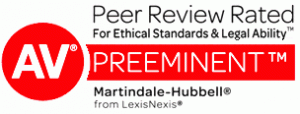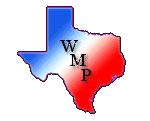Private Sector Enforcement Program: Providing quality services that are fair and prompt for both employees and employers in our administrative processing system is vital to our mission. In FY 2009, we received 93,277 private sector charges of discrimination. We also received 2,728 charges through net transfers from state and local Fair Employment Practices Agencies (FEPAs). We achieved 85,980 resolutions, with a merit factor resolution rate of 20.3%. (Merit factor resolutions include mediation and other settlements and cause findings, which, if not successfully conciliated, are considered for litigation.) Through our administrative enforcement activities, we also secured more than $294.2 million in monetary benefits. Overall, we secured both monetary and non-monetary benefits for more than 17,491people through our charge processing. We had a pending inventory of 85,768 charges at the end of the fiscal year. [See Enforcement and Litigation Statistics]
Federal Sector Enforcement Program: In our federal sector enforcement role, the EEOC is responsible for providing hearings and appeals after the initial processing of the complaints by each individual federal agency. Unlike our responsibilities in the private sector, we do not process complaints of discrimination for federal employees. In the federal sector, individuals file complaints with their own federal agencies and those agencies conduct a full and appropriate investigation of the claims raised in the complaints. Complainants can then request a hearing before an EEOC administrative judge. In FY 2009, we received a total of 7,277 requests for hearings. Additionally, we resolved a total of 6,779 complaints and secured more than $44.5 million in relief for parties in these complaints.
The EEOC also adjudicates appeals of federal agency actions on discrimination complaints and ensures agency compliance with decisions issued on those appeals. During FY 2009, the EEOC received 4,745 requests for appeals of final agency actions in the federal sector. [See Annual Report on the Federal Work Force]
Mediation
Private Sector Mediation Program: The EEOC’s mediation program has been very successful and has contributed to the ability, over the past few years, to better manage our growing inventory and resolve charges in 180 days or fewer. In FY 2009, the EEOC’s National Mediation Program secured 8,498 resolutions, and we obtained more than $121.6 million in monetary benefits for complainants from mediation resolutions.
Participant confidence in our program is high, with our FY 2009 figures reflecting that 96% of all participants would return to EEOC’s Mediation Program in the future. We believe this high confidence level helps with our continuing efforts to convince parties to charges, particularly employer representatives, of the value of the mediation approach.
Although participants almost uniformly view the mediation program favorably, the percentage of employers agreeing to mediate is considerably lower than the percentage of charging parties agreeing to mediate. As part of our effort to increase the participation of employers in the mediation program, we have encouraged employers to enter into Universal Agreements to Mediate (UAMs). These agreements reflect the employer’s commitment to utilize the mediation process to resolve charges.
Many employers entered into these agreements in FY 2009, resulting in a cumulative multi-year total of 1,603 UAMs (192 National/Regional UAMS and 1,411 Local UAMs).
Federal Sector Mediation Program: Using Alternative Dispute Resolution (ADR) techniques to resolve workplace disputes throughout the federal government can have a powerful impact on agencies’ EEO complaint inventories and, in turn, the Commission’s hearings and appeals inventories. Resolving disputes as early as possible in the federal sector EEO process improves the work environment and reduces the number of formal complaints, allowing all agencies, including the EEOC, to redeploy resources that otherwise would be devoted to these activities. In addition, a growing number of agencies have incorporated dispute prevention techniques into their ADR programs, further increasing productivity and reducing the overall number of employment disputes.
Data submitted by federal agencies at the close of FY 2008, the most recent data available, indicate that there were 38,898 instances of pre-complaint EEO counseling across the federal government. Of that number, the parties participated in ADR in 19,267 cases, or 49.5% of the time.
The Commission’s efforts in promoting and expanding mediation/ADR at all stages of the federal EEO complaint process also appear to be having a positive effect on federal agencies’ EEO complaint inventories. As more agencies expand their efforts to offer ADR during the informal process, we expect to see continued decreases in the number of formal complaints filed, which will reduce costs for complainants and all federal agencies, and enable agencies to focus resources on their primary missions.
EEOC continues to actively pursue a variety of ways to assist federal agencies in improving alternative dispute resolution by identifying and sharing best practices, providing assistance in program development and improvements, providing training to federal employees and managers on the benefits of ADR, and maintaining a web page that serves as a clearinghouse for information related to federal sector ADR. We will continue to expand technical assistance efforts with agencies to encourage the development of effective ADR programs and promote ADR training among government managers and staff.
Williams, McClure & Parmelee is dedicated to high quality legal representation of businesses and insurance companies in a variety of matters. We are experienced Texas civil litigation attorneys based in Fort Worth who know Texas courts and Texas law. For more information, please contact the law firm at 817-335-8800. The firm’s new office location is 5601 Bridge Street, Suite 300, Fort Worth, Texas 76112.

![texas[2]](https://texasdefensecounsel.com/wp-content/uploads/2014/02/texas2.gif)
